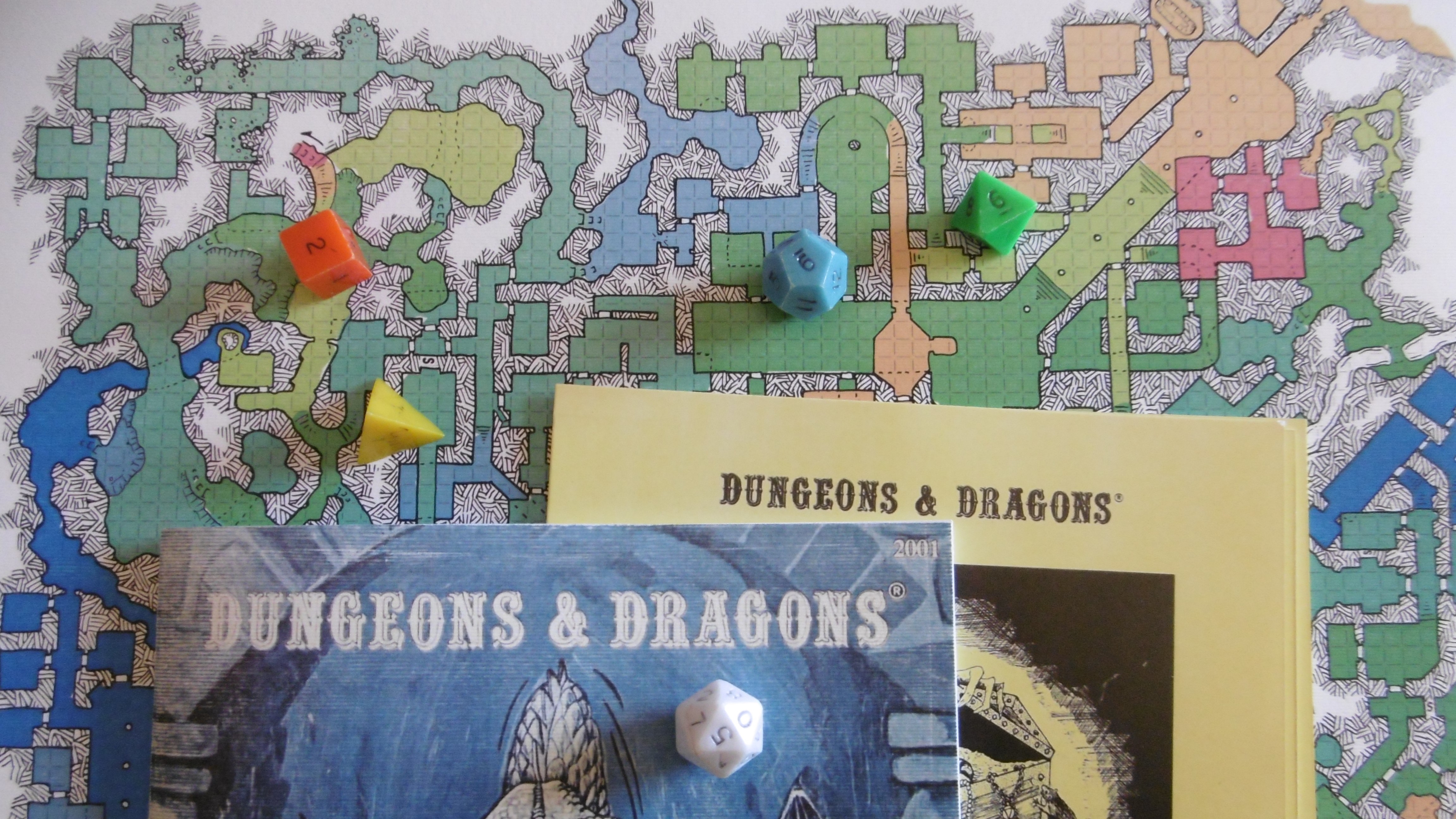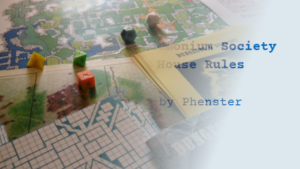The Flying Dungeon Stocking Table reflects the stocking methods given in the Holmes edition with supplements Monster & Treasure Assortments and Dungeon Geomorphs. The idea that gets me further than the head voice saying, “Bluebook D&D!” is to use M&T for random monsters and treasures.
Basic D&D (1977) only goes to 3rd level though, and you might have another rules preference. These are my notes on using other old-school editions1 with the Flying Table.
The Bluebook for Higher-Level Play
Should your dungeon-level configuration go down to Level 4, rules for 4th-level characters are easily extrapolated from the Holmes edition. For deeper halls, the tunnel branches in multiple directions. One might recreate the experience of playing Holmes through the 3rd- and into 4th-level of play then switching to AD&D, as Holmes suggests, or adding the D&D Expert Rulebook. To ensure continuity with all these options, continue using the Flying Table with M&T.
Another alternative, beginning with the Bluebook, is to extrapolate rules for higher levels oneself. You might draw on OD&D and its Supplements I-IV in addition to your own inspiration. For suggestions and guidelines, if such are necessary, we needn’t look further than the Zenopus Archives. There, we find that many others have explored these tunnels before us. Zenopus links a number of resources on the Rules Expansions page.
Other Editions
Among old-school D&D editions, the rules don’t change so much the nature of The Deep Halls as do the contents-stocking method and the monster encounter tables.
OD&D
“Original” DUNGEONS & DRAGONS (1974) is Holmes’s source for Basic D&D, and the Monster & Treasure Assortments were made for the original edition. Therefore, the Flying Table meshes with OD&D as well as it does Holmes.
AD&D
With the Advanced edition (1977-79) you might use the Flying Table without risk of falling. For to get all the goodness out of those rules, though, consider using the AD&D DMG’s Appendix A, which provides a similar stocking method. Since you have the map already, ignore tables up to TABLE V. F.: CHAMBER OR ROOM CONTENTS (171). Rolling on that table leads you to other tables and other appendices to fill the rooms.
Random Treasure in the DMG
TABLES V. H, I, and J are copied word-for-word from M&T’s TREASURE IS CONTAINED IN, GUARDED BY, AND HIDDEN BY/IN tables. Only the dice roll and chance for each, adapted to a d20, is modified.
When I say “consider” above, I mean “consider carefully.” Where one roll on the Flying Table indicates basic contents, Appendix A requires a short succession of dice rolls.
More importantly, TABLE V. F. produces contents in proportions much different from the Flying Table. Fewer monsters inhabit the dungeon, for example. Furthermore, only 5% of rooms contain a “Special,” likewise for “Trick/Trap,” and fully 60% of rooms are empty. There is an echo in these Deep Halls.
DUNGEON LEVEL X
If you’re tempted by Appendix A, check out the DUNGEON LEVEL X encounter matrix (DMG 179) and consider a deeper configuration for The Halls. What might the priests be doing with demon princes, liches, and elder titans in the halls on the lowest level?
B/X
The Flying Table swoops within a few percentage points of the adored tables in Moldvay’s section E. STOCK THE DUNGEON (B52). Using these rules, either stocking method works with monsters and treasures from M&T.
B/X’s Wandering Monsters tables present different inhabitants, though they are not strangers to each other. It’s in determining treasure where B/X may present a problem. If you’re a DM winging it for a group, all those rolls on the treasure table plus division for smaller encounters can slow the game. On the other hand, if you’re flying solo, generating treasures can be an exciting part of the experience.
Notes
1 I refrain from a recitation of the litany of old-school “retroclones,” available thanks to Wizards of the Coast’s Open Game License. Popular clones include Swords & Wizardry (Frog God Games, 2008—for OD&D), Blueholme (Dreamscape Design, 2014—Basic D&D), OSRIC (Black Blade, 2013—AD&D), and (for B/X) Labyrinth Lord (Goblinoid Games, 2009) and Old-School Essentials (Necrotic Gnome, 2020). To all these, my notes for their source edition apply.


Pingback: These Deep Halls or Where to Start – DONJON LANDS